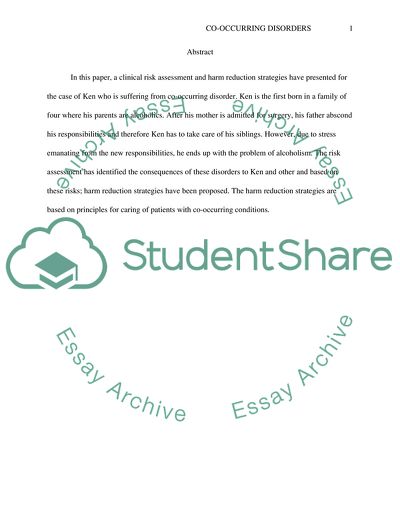Cite this document
(Completing a Clinical Risk Assessment and Implementing a Harm Case Study Example | Topics and Well Written Essays - 1500 words, n.d.)
Completing a Clinical Risk Assessment and Implementing a Harm Case Study Example | Topics and Well Written Essays - 1500 words. https://studentshare.org/psychology/1781328-completing-a-clinical-risk-assessment-and-implementing-a-harm-reduction-plan
Completing a Clinical Risk Assessment and Implementing a Harm Case Study Example | Topics and Well Written Essays - 1500 words. https://studentshare.org/psychology/1781328-completing-a-clinical-risk-assessment-and-implementing-a-harm-reduction-plan
(Completing a Clinical Risk Assessment and Implementing a Harm Case Study Example | Topics and Well Written Essays - 1500 Words)
Completing a Clinical Risk Assessment and Implementing a Harm Case Study Example | Topics and Well Written Essays - 1500 Words. https://studentshare.org/psychology/1781328-completing-a-clinical-risk-assessment-and-implementing-a-harm-reduction-plan.
Completing a Clinical Risk Assessment and Implementing a Harm Case Study Example | Topics and Well Written Essays - 1500 Words. https://studentshare.org/psychology/1781328-completing-a-clinical-risk-assessment-and-implementing-a-harm-reduction-plan.
“Completing a Clinical Risk Assessment and Implementing a Harm Case Study Example | Topics and Well Written Essays - 1500 Words”. https://studentshare.org/psychology/1781328-completing-a-clinical-risk-assessment-and-implementing-a-harm-reduction-plan.


